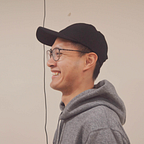What I Learned During My Time Working as a UX Researcher
A reflection on my career from 2016 to 2018.
My time at NTU iNSIGHT taught me a lot. It’s been so amazing that I felt the need to write this article. This is not a story you will see the introduction of tools and methods, but the thoughts and learnings from my work. I hope you will find the value of UX research and its connection with product design.
Rich experience in different industries and projects
First, I want to recap what I’ve done and touched at iNSIGHT. Since it is a design consulting firm, I’m fortunate to be exposed to many industries and different kinds of projects.
- Product vision and prototyping for smart home-based caring service
- Opportunity exploration for computing service provider and open data
- Marketing and product strategy of e-scooter company
- Evaluation of financial chatbot
- Evaluation of government’s budget reviewing platform
- Handbook of designing smart homes for aging adults
Make collaboration happen everywhere
How to make others understand our research findings and insights is always a question for researchers. Reports and presentations are common, but in my time at iNSIGHT, we have bridged designers’ processes closer with our analysis one, and we helped clients get immersed into the data to get more sense of it.
For our colleagues, we particularly made collaboration happen in analyzing data. We altered a bit of the rule of note-taking in an affinity diagram with the logic of Job to Be Done. For instance, we used to synthesize the common behavioral pattern in the second layer, but we tried to include the scenario and their wants. Therefore, the design team can reuse our analysis outcome in their design process, and it becomes a single source of truth.
For our clients, to help them understand the data and insights more easily, we shared our findings very often and invited them to multiple workshops. For example, we brainstormed the stories of our field studies every two or three research activities, so the clients can build better empathy and capture a big picture of problems. We also empowered clients to capture ideas and share their thoughts in every co-creation workshops, from analysis to ideation.
As a result, the effort we put into collaboration saved the UX research team and others plenty of time. Designers can start ideation sooner. Clients can consider the next action items better. And we, researchers, can form people’s better understanding of the insights and spend less time on writing reports.
Communication and understanding > perfect research activity and plan
User feedback is crucial to a product. But sometimes the client’s voice from business sides is equally important, or even more important. As a UX researcher, we have to weigh our research findings to find what’s the “real” findings that have the potential of business impact. It requires balancing between user and business.
Sometimes when I collaborated with colleagues from the Business or Design team, I had to understand their goals and limitations. By doing so, I can develop my research plan with proper methods and scope; otherwise, the research effort would be in vain without teams’ willingness to implement or learn from research findings. And most of the time, it can bring a better picture of the user and product profile with communication than only with research activity.
Beyond just advocating for users
At the very beginning stage of being a UX researcher, I used to present my findings and advocate for users in a neutral manner. However, I learned from my senior colleagues that presenting the insights with our opinions, which makes the insights more digestible and actionable.
Because I had to choose my perspective and tell the story, I learned to prioritize the findings with its importance for users as well as its feasibility and viability for clients. One common matrix applied is valuing the insights’ impact and value to both users and clients. With it, the information becomes focused.
